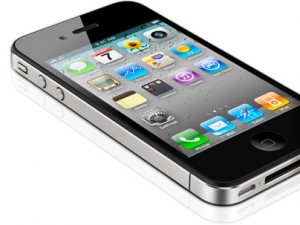Flying Radiation Exposure Info – There’s an App for that
 Flying somewhere and want to find out your exposure to galactic and solar radiation? A new update to an iPhone app will let you do that.
Flying somewhere and want to find out your exposure to galactic and solar radiation? A new update to an iPhone app will let you do that.
The $1.99 “SpaceWx” app provides real-time information about exposure to radiation from solar activity and other sources from space, starting at an altitude of 16,000 feet (5 kilometers). Exposure levels are broken down by altitude and latitude, with the highest exposures typically occurring higher and farther north.
The new radiation function of the app is aimed primarily at airline pilots, flight crews and passengers.
“Aviation occupational radiation exposure currently is not consistently monitored, measured or quantified,” said Dr. Chris Mertens, a senior scientist at NASA Langley Research Center in Hampton, Va. “This is the first model of its type to do that.”
Space Environment Technologies Inc. in Pacific Palisades, Calif., developed the space radiation app under the guidance of Mertens, principal investigator for the Nowcast of Atmospheric Ionizing Radiation for Aviation Safety (NAIRAS) project.
The app is intended as “decision support tool” for pilots and crew of commercial airliners.
“The audience is primarily professional and educated lay public who are interested in space weather,” said Kent Tobiska, president of Space Environment Technologies. “There’re a lot of diverse communities interested in space weather.”
Use of high-rad routes rising
Galactic cosmic ray and solar radiation levels are significantly higher at altitudes flown by airliners. They are even higher on “polar routes” increasingly used by airlines as a cost-saving alternative to longer routes at lower latitudes.
Tobiska’s company developed the app under a contract with NASA, and also supports Utah State University’s Space Weather Center, which owns the SpaceWx app.
The overall app is a suite of space weather information about the sun, solar wind, magnetosphere, ionosphere and thermosphere, and now space radiation.
Levels of radiation from space are low on the ground, but increase significantly with altitude. At 30,000 to 40,000 feet, the typical altitude of a jetliner, exposure is still considered safe – less than a chest X-ray.
Exposure is much higher, however, over the Earth’s poles, where the planet’s magnetic field no longer provides shielding. And with a thousand-fold rise in commercial airline flights over the North Pole in the last 10 years to get from North America to Russia and Asia, exposure to radiation has become a serious concern.
One or two flights won’t exposure passengers and crew to deadly doses of radiation. But multiple flights pose a cumulative health risk for developing cancer, Mertens said.
A study led by Mertens in 2003 indicated that a polar-route flight during a solar storm resulted in exposure to about 12 percent of the annual radiation limit recommended by the International Committee on Radiological Protection.
The radiation function of the iPhone app shows radiation “effective dose rate”, a quantity related to biological risk, at 16,000 feet (5 kilometers), 35,000 feet (11 kilometers) and 49,000 feet (15 kilometers). Color-coded “safety signal” bars rate the risk based on flight time and exposure rate. Safety categories are green (safe) yellow (caution) and red (danger).
The SpaceWx app draws on data from 16 government agencies, companies and universities around the world, Tobiska said, and 112 real-time data sets from orbiting satellites and ground-based observatories.
Eventually, the app will include radiation forecasts, and one day likely provide radiation exposure levels anywhere in the world, at any altitude.
“The data is there,” Mertens said.
More info: http://science.larc.nasa.gov/asap/research-spaceWX.html
– by Michael Finneran, NASA Langley Research Center